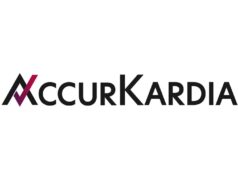 Applying artificial intelligence (AI) to a standard electrocardiogram (ECG) may be used to determine physiological age, according to a study published in Circulation: Arrhythmia and Electrophysiology. Zachi Attia (Mayo Clinic, Rochester, USA) et al found that an AI algorithm could be used to estimate the age group of a patient cohort and predict their sex from ECG data. They say that, with further validation, it could be used to measure a patient’s overall health.
Applying artificial intelligence (AI) to a standard electrocardiogram (ECG) may be used to determine physiological age, according to a study published in Circulation: Arrhythmia and Electrophysiology. Zachi Attia (Mayo Clinic, Rochester, USA) et al found that an AI algorithm could be used to estimate the age group of a patient cohort and predict their sex from ECG data. They say that, with further validation, it could be used to measure a patient’s overall health.
Several biological variables and anatomical factors are thought to contribute to sex- and age-related differences on the ECG. Kapa and colleagues hypothesised that a type of AI known as a convolutional neural network (CNN) could be trained in a process called “deep learning” to predict age and sex using 12-lead ECG signals, and that the difference between CNN-predicted age and chronological age could be used as a physiological measure of health.
The researchers used 10-second samples of 12-lead ECG signals from 499,727 patients to train CNNs to find similarities among the input and output data, and from this to predict sex and age. The CNNs were tested for accuracy on a separate cohort of 275,056 patients by predicting the output when only given input data. The researchers then created an algorithm to extract patients with multiple ECGs recorded over a minimum of two decades, and 100 patients were randomly selected so as to assess within-individual accuracy of CNN age estimation.
All ECGs at every chronological year of life were evaluated using the trained network for age, and CNN-predicted age was plotted against the chronological age at which that ECG was obtained. Clinical histories for patients were obtained via chart review, with inclusion of clinical comorbidities, such as previous history of myocardial infarction, low ejection fraction, coronary disease, hypertension, diabetes, atrial arrhythmias, and prior history of cardiac surgery. Researchers also recorded incident events over the follow-up period, including hospitalisation for haemodynamic shock, incident cancer, incident comorbidities that were first diagnosed over the follow-up period, new diagnoses of coronary disease, heart failure, or thromboembolic events, and cardiac transplantation.
In all, 275,056 patients were tested; 52% were male, and mean age was 58 years. The model obtained 90.4% classification accuracy for sex, with an area under the operating curve (AUC) of 0.97 in the independent test data. Age was estimated as a continuous variable, with an average error of 6.9±18 5.6 years (r2 0.7). Among 100 patients with multiple ECGs over the course of ≥two decades, 51% had an average error between real age and CNN-predicted age of <seven years.
The neural network estimated a patient’s chronological age as higher after experiencing adverse health situations such as heart attack, low ejection fraction and coronary artery disease, and lower age if they experienced few or no adverse events. In patients with a CNN-predicted age that exceeded chronological age by >seven years, the major factors seen included low ejection fraction, hypertension, and coronary disease (p<0.01). In 27% of patients where correlation was >0.8 between CNN-predicted and chronological age, no incident events occurred over follow-up of 33+12 years.
However, Attia et al point out: “All individuals included were patients, and thus an ECG was obtained for some clinical indication. Whether these results are similarly accurate amongst an ostensibly healthy population is unknown, and revalidation in such a cohort will be critical.”
They say that although the cohort was small, patients were randomly identified, and that their review “supports the concept of a correlation between incident and chronic diseases and deviations between CNN-predicted age and chronologic age”.
But, they acknowledge that, because many patients had multiple ECGs over decades, and thus may have had an indication for serial ECGs, this may be reflective of a “sicker” cohort: “Thus, further research is needed to understand why the CNN over- or underestimates a patient’s age in certain clinical situations. The algorithm output, the ‘ECG age’ may indicate a risk for, or protection against, future morbidity and mortality. Future research into whether CNN-predicted age may predict short- and long-term patient outcomes ought to be performed, especially given our study was focused on predicting age at a point in time a specific ECG was obtained, and not purposed to predict future ageing.”









